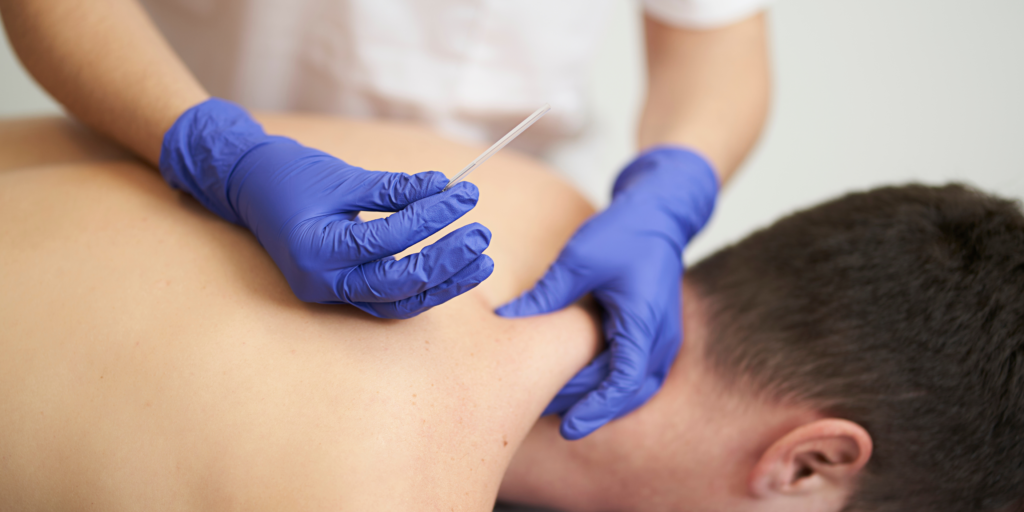May 21, 2024
Is acupuncture and dry needling interchangeable?
You might not be able to distinguish between acupuncture and dry needling if you were merely comparing the two with a picture. Stainless steel needles that are thin are used in both acupuncture and dry needling at Physiotherapy Centers in Gurgaon. Both procedures involve inserting needles beneath the skin, and they both promise to alleviate pain.
The similarities stop there. Distinctive features aid in setting the two apart. It is thought that by inserting needles into particular bodily spots, one might alleviate pain, discomfort, or other problems. The other is intended to activate irritable muscles, or trigger points.
Selecting the best kind of treatment for you can be made easier if you are aware of the distinctions.
What is the purpose of dry needling?
A contemporary method of treating muscle pain is called dry needling. It is becoming more and more popular.
A practitioner will inject many filiform needles into your skin during a dry needling session. Stainless steel filiform needles are tiny, short needles that don’t introduce fluid into the body. The word “dry” is used for this reason.
The needles are inserted by the Best physiotherapist in Gurgaon into “trigger points” in your muscle or tissue. Another term for dry needling is intramuscular stimulation. The patches of firm or twisted muscle are the points.
According to practitioners of dry needling, the needle helps release the knot and soothe any muscle soreness. Your skin will harbor the needles for a little duration. The practitioner determines how long it will take.
Physical therapists and other medical personnel are trained in the use of dry needling. The duration of the instruction can, however, differ.
What advantages can dry needling offer?
For certain cases of stiffness and soreness in the muscles, dry needling may be helpful. Furthermore, releasing the trigger points might enhance range of motion and flexibility. For this reason, this technique is frequently applied to the treatment of fibromyalgia, muscle soreness, and sports injuries.
As more information becomes available, safe dry needling practices—which do not currently have recommendations for practice—are expected to be standardized.
What advantages does acupuncture offer?
The basic tenet of traditional acupuncture is that disease arises from an interrupted or blocked qi. Your body receives healing energy from qi. The goal of acupuncture is to clear these obstructions and restore equilibrium to your energy flow.
It is thought that placing needles stimulates the nerve system. Further studies are being conducted to learn more about the possible effects of acupuncture, including:
- Reducing the level of inflammation
- Boosting blood flow, which causes endorphins to be released to reduce pain
Hundreds of ailments and symptoms can be treated with acupuncture, including:
- Pain
- Nausea
- Vomiting
- Headache
- Menstrual cramps
- Allergies
Acupuncture is sometimes used to treat substance abuse issues and to aid with smoking cessation.
Acupuncture versus dry needling for osteoarthritis
Osteoarthritis is treated with dry needling as well as acupuncture. Specifically, studies indicate that dry needling and acupuncture are very effective in treating arthritis-related knee discomfort.
Non-trigger point dry needling is superior to standard dry needling alone for the treatment of osteoarthritis in the hip and knee.
The fact that this dry needling technique targets a broader range of muscles and nerves makes it more akin to acupuncture. The sole site of pain is the target of trigger point dry needling.
If you are suffering from any kind of musculoskeletal health issue then visit Kalpanjali Physio Osteo Clinic today. Our team of expert physiotherapists and experienced professionals will provide you with the most suitable treatment.
Category
Latest Post
- Expert Physiotherapy in Gurgaon for Neck and Back Pain
- Physiotherapy Treatment Gurgaon for Cervical Spondylosis
- Physiotherapy Centers in Gurgaon: Cervical Pain Relief Exercises
- Physiotherapy Treatments Gurgaon: A Comprehensive Guide
- Reasons to Consult the Best Physiotherapist in Gurgaon
- Best Physiotherapy Treatment Clinics in Gurgaon
